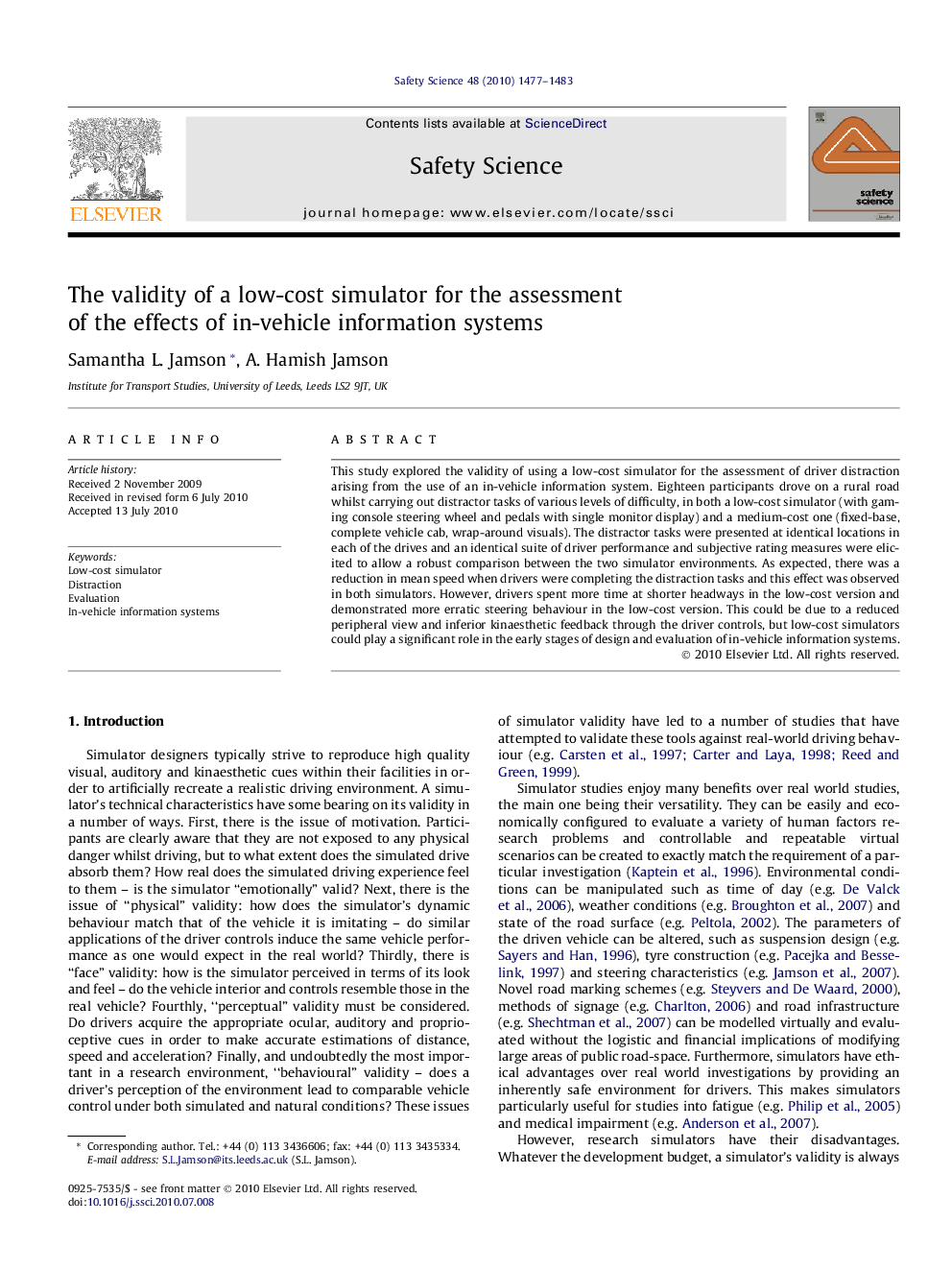| Article ID | Journal | Published Year | Pages | File Type |
|---|---|---|---|---|
| 589814 | Safety Science | 2010 | 7 Pages |
This study explored the validity of using a low-cost simulator for the assessment of driver distraction arising from the use of an in-vehicle information system. Eighteen participants drove on a rural road whilst carrying out distractor tasks of various levels of difficulty, in both a low-cost simulator (with gaming console steering wheel and pedals with single monitor display) and a medium-cost one (fixed-base, complete vehicle cab, wrap-around visuals). The distractor tasks were presented at identical locations in each of the drives and an identical suite of driver performance and subjective rating measures were elicited to allow a robust comparison between the two simulator environments. As expected, there was a reduction in mean speed when drivers were completing the distraction tasks and this effect was observed in both simulators. However, drivers spent more time at shorter headways in the low-cost version and demonstrated more erratic steering behaviour in the low-cost version. This could be due to a reduced peripheral view and inferior kinaesthetic feedback through the driver controls, but low-cost simulators could play a significant role in the early stages of design and evaluation of in-vehicle information systems.
